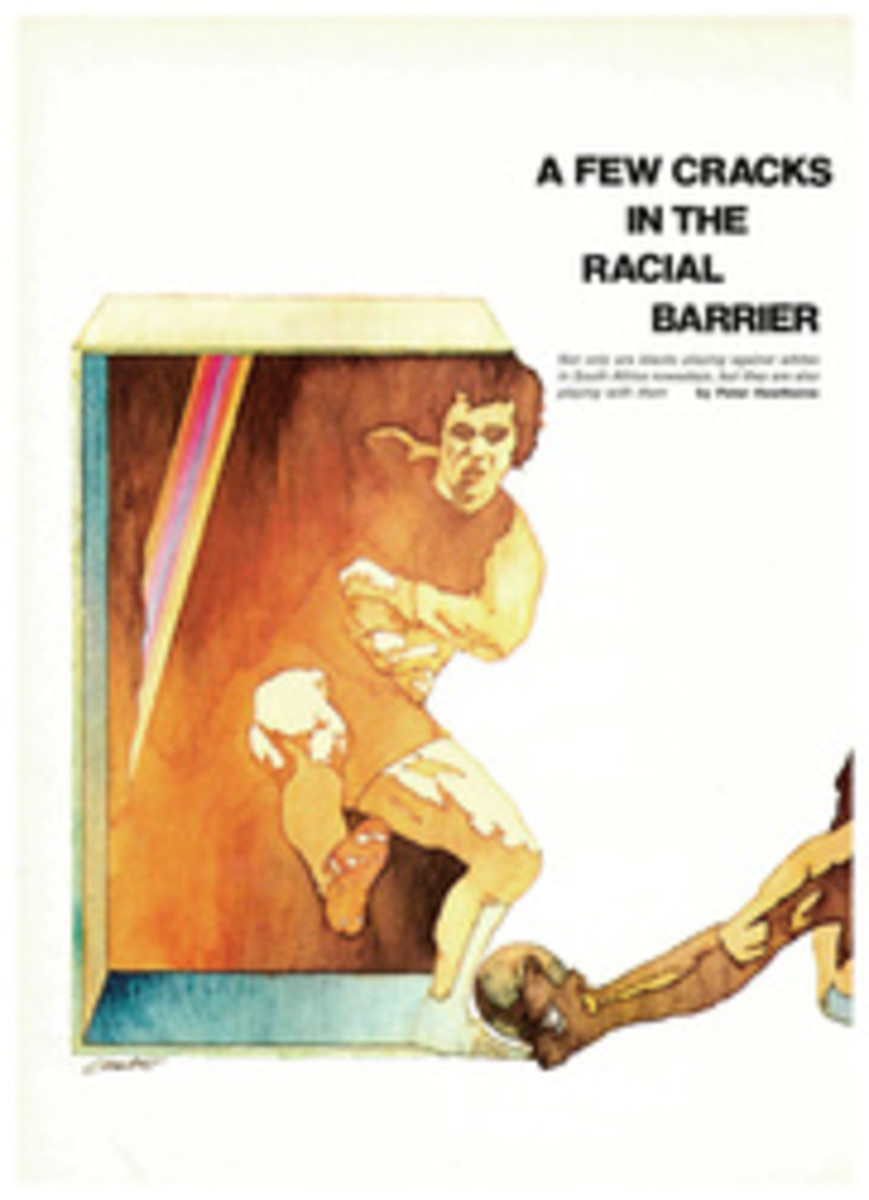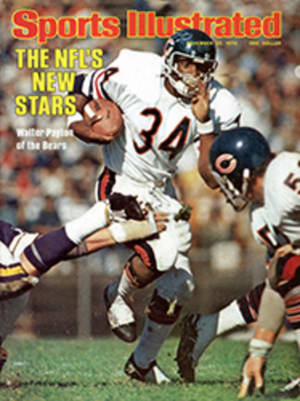
STRANGE CASE OF A FISHERMAN WHO PUT OUT HIS BAIT AND LANDED MURDER
When fishermen Albert and Charles Hobson went to Coogee Beach near Sydney, Australia on the morning of April 18, 1935 to check the baited line they had put out a mile offshore the night before, they found part of a small shark on the hook, but most of the fish was gone. Then they saw why—the small shark had been attacked by a 14-foot tiger shark that had become entangled in the line. The trapped fish was immense; men have crossed oceans in vessels shorter than it. Hobson and his brother secured the thrashing tiger shark with ropes and towed it to the beach. Because the fish was very much alive, the Hobsons decided to transport it by truck to the Coogee Aquarium. That turned out to be a fateful decision, because the shark's presence in the aquarium would open a bizarre murder case that involved interpretation of a law enacted thousands of miles away almost 700 years before.
The next day crowds of excited people flocked to see the monster as it lazed around its tank, wolfing down chunks of mackerel. For almost a week the shark seemed to have adapted perfectly to captivity. Then on the seventh day the fish suddenly became ill, performed several erratic maneuvers and threw up. Among the unlovely contents of the shark's stomach, the spectators saw one bird, two rats—and an entire human arm.
The arm was muscular, had a six-inch rope tied around its wrist and sported on its forearm a tattoo of two boxers squaring off. The sick shark was killed and its stomach examined, but there were no more human remains.
The first problem for the police was to identify the erstwhile owner of the arm. Through investigation and the publication of a photo of the limb in the newspapers, it was soon determined that only two men in Australia wore such a tattoo. And it was quickly determined that one of them still had both his arms firmly in place. The other was reported to be one James Smith. The identity of the arm's owner was verified by fingerprints taken from the hand.
Smith, a 45-year-old billiard marker, ex-boxer and shady character, had last been seen 10 days before the arm surfaced in the aquarium. Then he had abruptly and inexplicably disappeared. For the first time it occurred to police that perhaps the missing man was not the unlucky prey of a vicious shark, but the victim of foul play. Coroners then determined that the arm had indeed been cut off with a knife before it had been swallowed by the shark. And it had not been amputated surgically, because no allowance for skin flaps had been made, as would have been the case had a surgeon done the cutting. Clearly the arm was not a hospital discard.
From here on, the story becomes complicated and, at times, obscure. The police trail quickly led to Reginald Holmes, a handsome and wealthy Sydney boatbuilder. Smith had worked as caretaker on Holmes' yacht Pathfinder. The police discovered that some time earlier Pathfinder had been deliberately sunk to defraud an insurance company of a large sum. The detectives alleged that several people had been involved in the crime, including Smith, Holmes and one Patrick Brady, and that when the fraud had misfired, disputes had broken out among the conspirators. The authorities charged that these disagreements had led to Smith's murder. Holmes vehemently denied all this, but he admitted that Brady, a questionable character, had come to see him on April 9, the day after Smith's disappearance, had tried to blackmail Holmes about the sinking of the yacht and had bragged of killing Smith.
Reports of blackmail, fraud and murder were featured on the front pages of Australian newspapers, but it was on charges of forgery that Brady was arrested on May 17. The seemingly cooperative Holmes was questioned by the police, and he promised to tell everything he knew to the coroner's inquiry. Clearly the forgery charge was merely being used to hold Brady until there was enough evidence to accuse him of Smith's murder.
Then, three days later a strange incident occurred in Sydney Harbor. A man out sailing with his children almost had his small craft swamped by an expensive, wildly careening motorboat. When he reported the reckless driver to the police he said, "You won't mistake him. He has a bullet hole in his forehead."
For the next two hours a Mack Sennett chase took place in the harbor. A police department craft and another launch with Holmes' brother on board frantically pursued Reginald Holmes as he drove his swift boat through and around pleasure craft, bounced off anchored vessels and careened past pilings and wharfs. When he was finally caught, his face a bloody mask, Holmes gave a semicoherent account of having been shot by strangers near his house and of having taken to his motorboat to escape further injury. He assumed, he said, that the two launches chasing him were being piloted by his assailants.
A soft-nosed bullet was extracted from the wound in Holmes' forehead, and a week later, after a miraculously fast recovery, he made a lengthy statement to the police, which he promised to repeat before the coroner's inquest on June 12. "At last the shark arm mystery will be solved," reported a newspaper.
But Holmes never gave his evidence; the night before the hearing he was found slumped over the steering wheel of his car, a bullet through his head. This time the shot had been fatal.
At the next day's inquest, Brady was charged with the murder of Smith, but after 39 witnesses had been examined, Brady's lawyer appealed to a supreme court judge to prohibit the coroner from proceeding. His grounds were that the coroner had no jurisdiction to hold an inquiry on the basis of only an arm, because under a rather recondite British statute of 1276, a single limb could not be considered a body, and the presence of a body was essential to an inquest. In short, the lawyer argued, there was no corpus delicti. (That is a badly misused term. Webster's New World Dictionary states, "The corpus delicti in a murder case is not the body of the victim, but the fact that death has occurred and that it is the result of murder.")
Without an entire body, Brady's attorney said, there was no proof that Smith was even dead. He could be alive and well—except for the lack of an arm—somewhere in the world.
Nevertheless, the Crown bravely set out to prosecute Brady for the murder of Smith. It contended that Brady, under an assumed name, had rented a cottage at Cronulla, a seaside resort near Sydney, in March of 1935. Smith was last seen in toto (fully armed, as it were) on the night of April 8, when he played dominoes in a hotel at Cronulla with Brady and two local residents. The prosecution claimed that the next day Brady took a taxi to Sydney to see Holmes, bought a mattress and a metal trunk at a secondhand shop and returned to the resort. The Crown alleged that the resultant "unpleasantness at the Cronulla Cottage," as the newspapers referred to it, went as follows:
Smith was dismembered on the mattress, his parts were stuffed into the trunk, and the trunk was taken to sea in a boat and dumped. Detectives reasoned that the arm had not fit in the trunk, so a rope and a weight had been affixed to it. Then it also was thrown over the side.
The defense rebutted with a hypothetical alternative. Why, Brady's lawyer asked, had the arm, which the prosecution claimed had been in the shark's stomach for a minimum of eight days and a maximum of 17, not been digested by the fish in the usual 24 hours? Couldn't the limb have been tossed into the aquarium after the shark's capture and never been ingested?
The Crown countered with expert ichthyologists who testified that the shark's digestive system could have been so upset by swallowing the arm that it failed to function normally. As for the possibility of the arm having been thrown into the aquarium after the shark's arrival there, the prosecution produced 14 witnesses who testified that they had witnessed the throwing up.
Brady repeatedly denied that he had killed or dismembered Smith. He did admit that the victim had been in his rented cottage the night of his disappearance, but he swore that Smith had left with Albert Stannard, a Sydney launch proprietor. Without the evidence of the murdered Holmes, the charges could not be sustained, and Brady was acquitted. "Of course, you are innocent, Mr. Brady, but please don't do it again, Mr. Brady," wrote one Sydney newspaper after Brady was acquitted.
So much for the shark arm victim and his assumed murderer, but what of the killing of Holmes, which was an indirect result of the fish's regurgitation? Thousands of dollars in rewards for information about Holmes' murderer were offered by newspapers and the Australian government, and eventually Stannard and J.P. Strong, a longshoreman, were accused of shooting him. A first trial resulted in a hung jury; in a second, Stannard was discharged at an early stage in the proceedings, and Strong was later acquitted of slaying Holmes.
After a dramatic beginning, the case had fizzled out. Australia's most sensational murders have still not been solved, though they had their impact on the legal world by forcing clarification of the meaning of the term corpus delicti. It was said that Holmes' widow knew what had actually taken place and was about to reveal all that her unfortunate husband had not been able to tell when, in another frustrating chapter of the crime, she died in a mysterious fire at her house in Sydney in November 1952.
ILLUSTRATION

